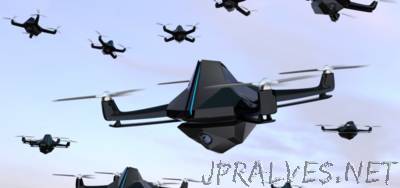
“The world is already well on its way to a day when innumerable autonomous cars and drones buzz about, shuffling commuters to work and packages to doorsteps. In fact, there is new term for it floating around the circles of engineers and venture capitalists who hope to see the day arrive sooner rather than later: They call it “The Swarm.” But this dramatic-sounding reality raises a critical question that has yet to be answered: Who will control the swarm? Some say control will be distributed. Each car and every drone will be its own self-sustaining unit – individually aware of its surroundings, individually directed where to go and individually outfitted with all the computational power to make it through the world efficiently and without accident. A collection of faculty at Stanford have a different view. They believe that device swarms will be managed centrally, using applications running in large datacenters, much the way the cloud centralized big data. The faculty members have formed a new laboratory at Stanford, called the Platform Lab, to develop infrastructure for these new “Big Control” applications. “We think all these self-driving cars and drones will be controlled not individually, but centrally, in a coordinated fashion,” says John Ousterhout, faculty director of the lab. “This has the potential to change how society functions on a daily basis.” While most current research into autonomous vehicles assumes a distributed model – relatively autonomous devices, controlled in a peer-to-peer fashion with each machine doing its own calculations – the concentrated model has its advantages, says Ousterhout. First is the ease of creating applications. Writing applications for the distributed model is very difficult, since each device has limited information about the state of the world. With the centralized approach, data from all the devices is collected in one place. This provides a big-picture view of the world that allows better control of higher-level tasks like system-wide situational perception, decision-making and large-scale traffic planning. Second, control applications running in datacenters have many more resources available, such as computing horsepower and large back-end datasets. This allows them to implement more sophisticated collaborative behaviors for the device swarm. In addition, the centralized applications can take advantage of powerful machine learning algorithms, which allow the control system to learn and improve its behavior.”
